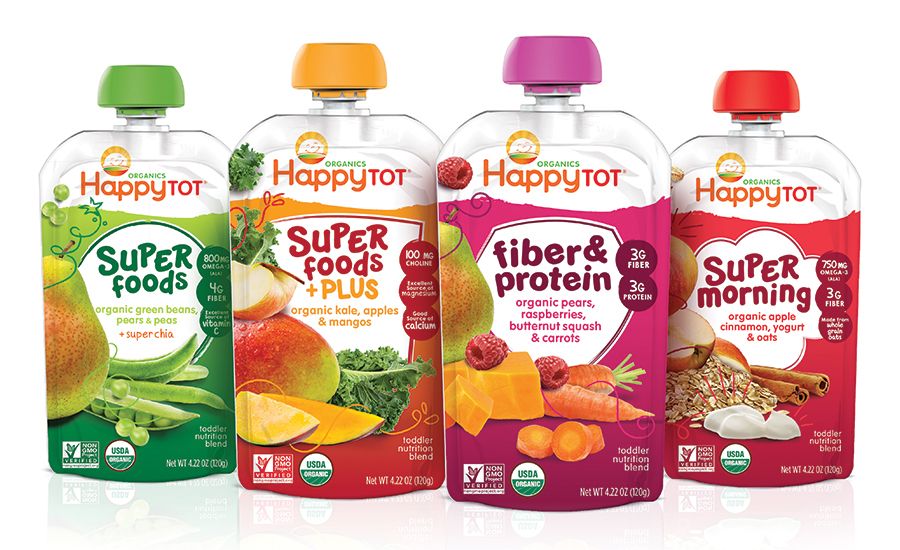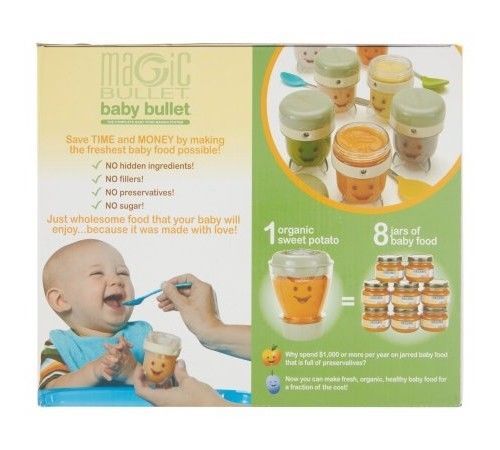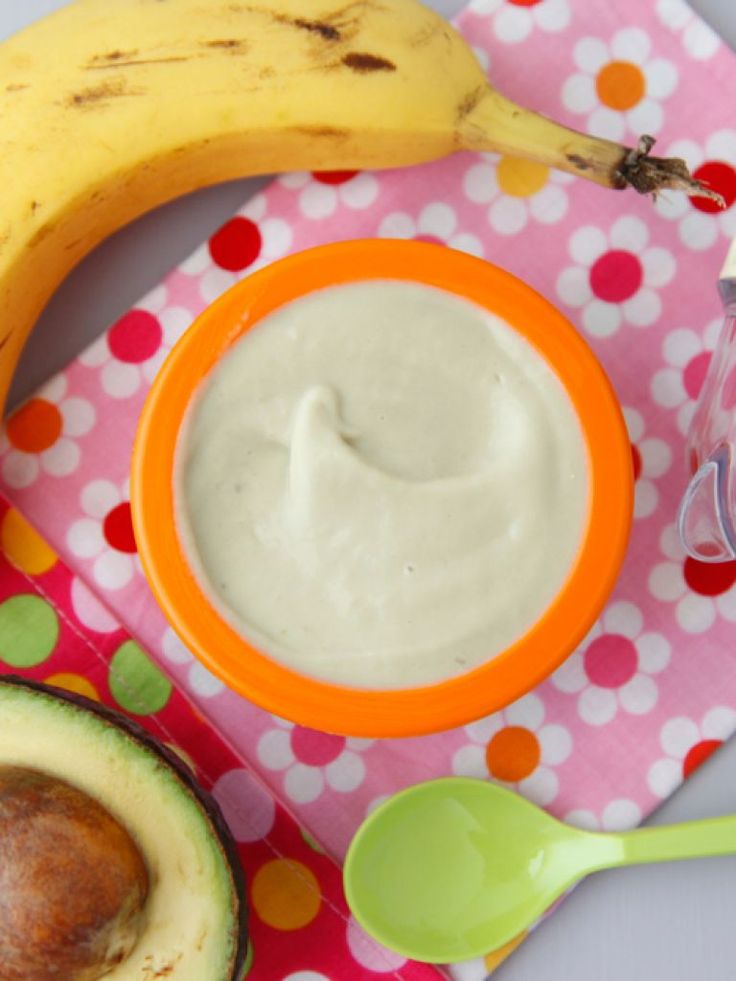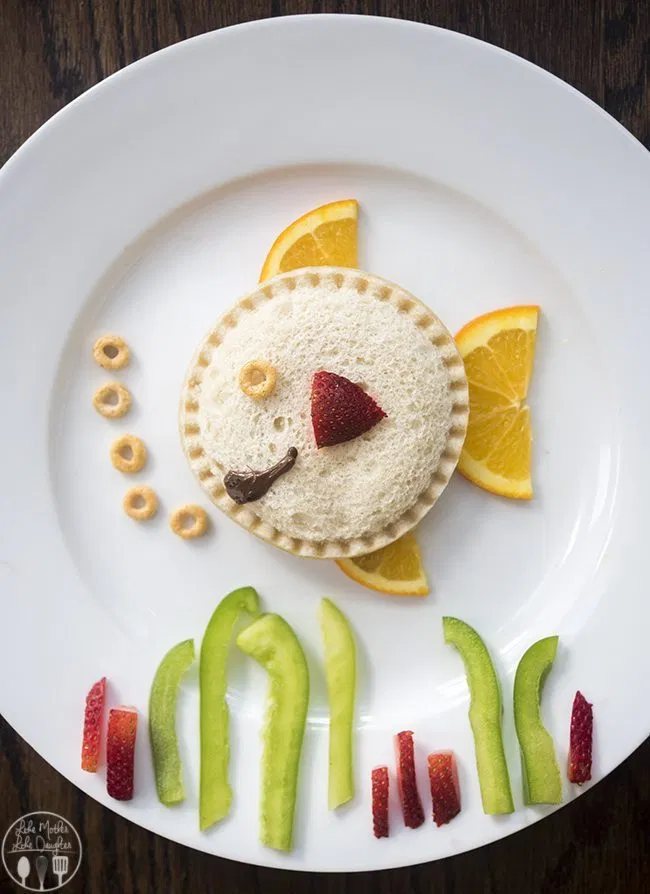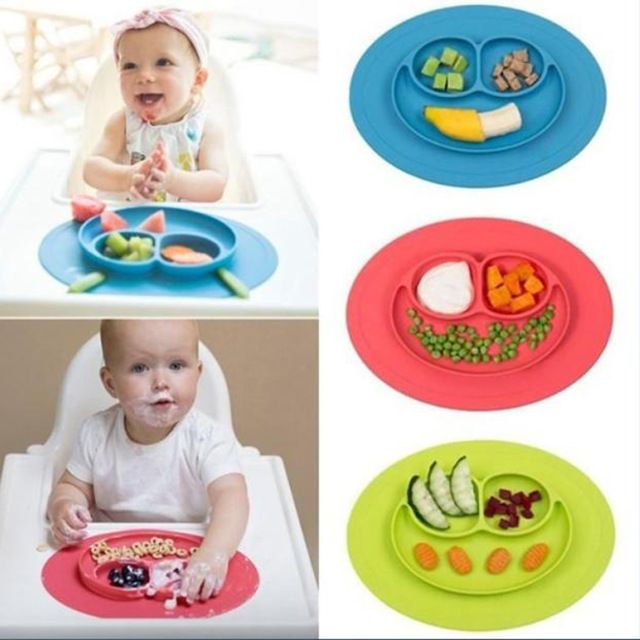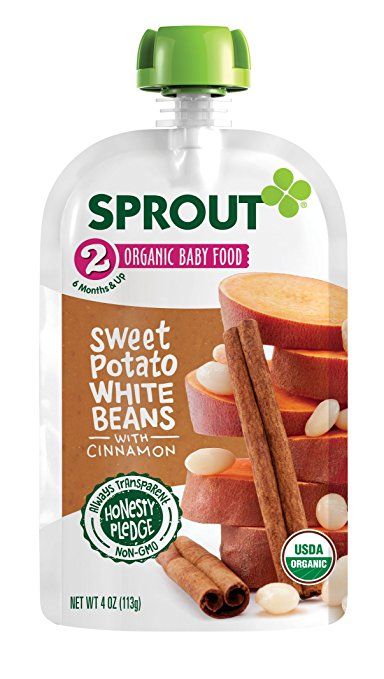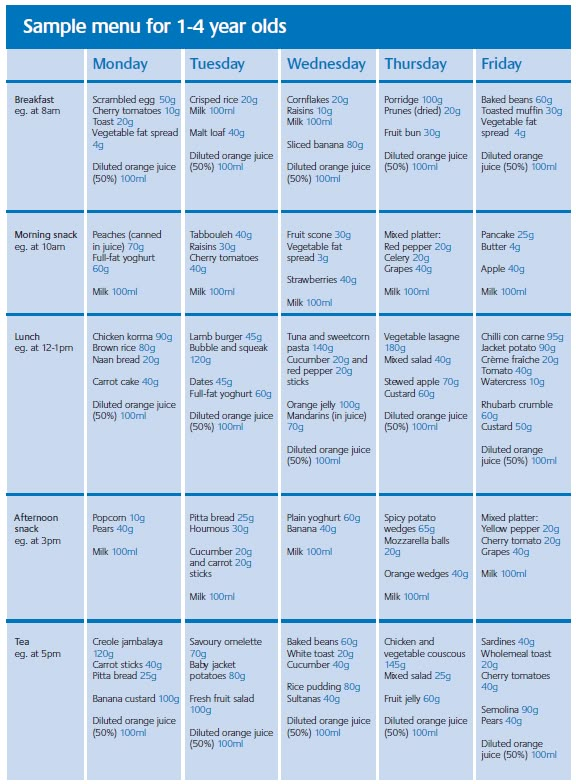Baby food as a snack
Hungry for a snack? Try baby food
When Teresa Paonessa wants to lose a few pounds, she does what any expert would recommend: ramp up her exercise and clean up her diet. But Ms. Paonessa, who runs the R.E.D Lifestyle Group, an agency that represents fitness professionals, includes another surefire strategy, one she says curbs her cravings while satisfying her sweet tooth.
Gum? Dark chocolate? Frozen grapes? Try baby food.
"I've never pulled it out in the food court but my friends are aware that I eat it," she says. "They think I'm nuts, but they say they want a flat stomach [like mine]by summer and I tell them this is what they have to do. I sell it as a portion-controlled snack, not as baby food."
No surprise, it's a tough sell. The thought of eating pureed fruit or vegetables packaged in a jar boasting "for babies 6 to 12 months" is enough to make some people skip snack time altogether. And make no mistake: Adults eating baby food is less a trend than a quirky preference enjoyed by a few.
But devotees are quick to point out that there's nothing repulsive about consuming food that you happily serve to the most precious ones in your life. Consider that baby food is almost always fat free and the serving size is smaller than a pudding cup (most range from 45 to 140 calories).
Fruit and vegetable varieties (you'd be hard-pressed to find someone who eats the beef and chicken blends) rarely consist of anything other than the main ingredient and water. Commercial brands such as Gerber have introduced organic lines, while Sweetpea Baby Foods, a Toronto-based company, packages their flash-frozen flavours in ice cube trays that can be popped out and blended into smoothies.
"You get hooked on it," Ms. Paonessa says of the blueberry flavour. "It tastes like jelly as opposed to jam."
Like any unusual diet, the baby-food club even has a celebrity fan: Sophie Dahl, the former model and granddaughter of the late author Roald Dahl, is unapologetic about her love for infant cuisine. She includes her grandfather's recipe for mashed bananas with olive oil in her new cookbook, Miss Dahl's Voluptuous Delights.
She includes her grandfather's recipe for mashed bananas with olive oil in her new cookbook, Miss Dahl's Voluptuous Delights.
Nostalgia is often part of the appeal. Paul Aguirre-Livingston, a 23-year-old magazine editor, says he was "addicted" to banana baby food when he was younger; later he would eat some of his nephew's infant dessert when babysitting. So when he was charged with bringing dessert for a dinner party a few weeks ago, he opted to bring six jars of banana mush instead of mini crème brulées.
"It was a gag dessert," he says, no pun intended. "I spent 99 cents for six jars, you can't go wrong. There was something kind of trashy about it because we were eating it out of the jar but I've eaten worse when drunk."
Mr. Aguirre-Livingston is convinced that more people would be inclined to eat baby food if the jars weren't plastered with big-cheeked toddlers or childish graphics.
"It's like pink is for girls, blue is for boys and baby food is for babies," he says.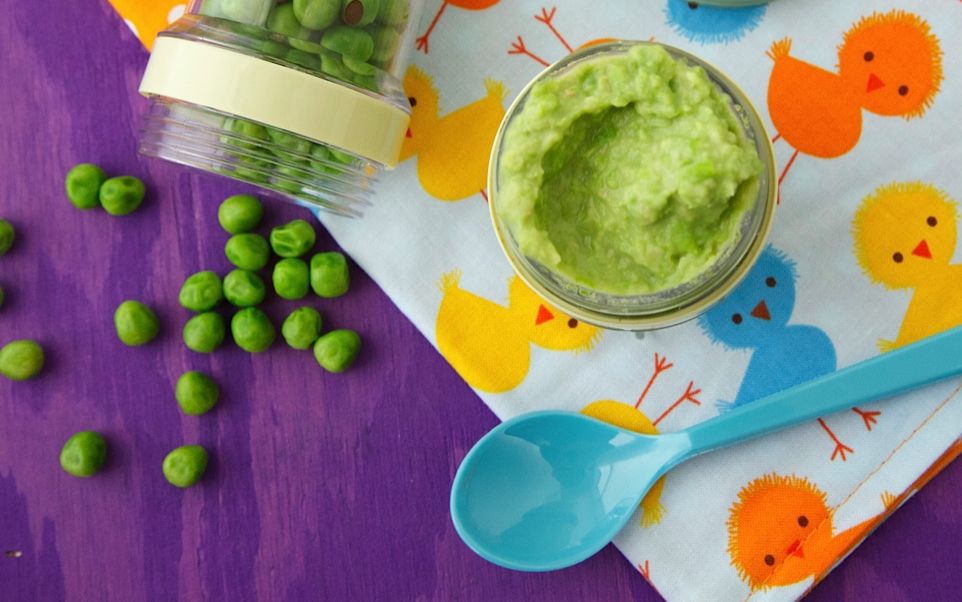 "[We've]been conditioned."
"[We've]been conditioned."
Lily, who did not want her last name used, agrees. "I don't think of it so much as baby food as wholesome in convenient serving sizes," says the 62-year-old Torontonian, who always has Sweetpea packages at home (she'll mix the banana blueberry with yogurt and eat the sweet potato as a side dish or snack). "Sometimes I don't have a chance to do groceries and it's nice to know there's something in the freezer that's so small and defrosts quickly."
Sweetpea is one company trying to tap into the adult market. Last month, it launched a line of vegan, kosher, organic cookies made with 100-per-cent whole grains in such flavours as pumpkin spice, sweet apple and pear and banana. Tagline: "For ages 1 to 101."
"We have a lot of customers who give their kids half the bag and eat the rest," says co-founder Erin Green.
The flower-shaped bites have far more taste than Arrowroots, which have a following among adults, but still lack the salt and full-bodied richness of an adult cookie.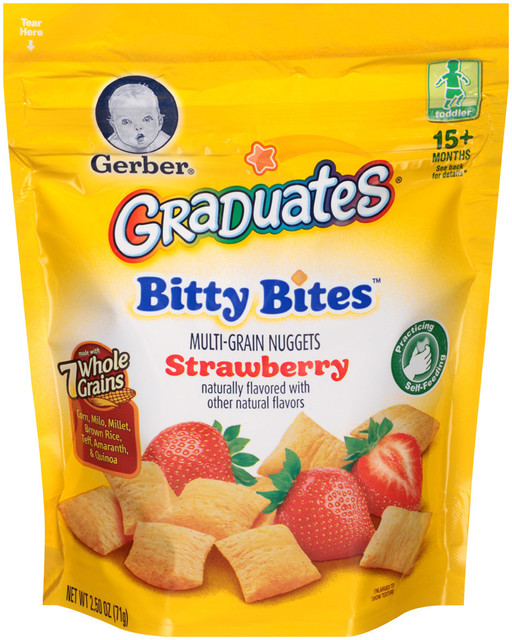
It's an example of another reason the baby-food trend isn't going to catch on, says Rosie Schwartz, a consulting dietician and author of The Enlightened Eater's Whole Foods Guide.
"I think people won't eat [baby food]because it is really bland," she says. "It has no spices and no salt."
Ms. Schwartz is concerned about people who use baby food as a diet aid, especially as far as portion control is concerned. "To me that's extreme. I think people need to learn to control portions and that's not the answer."
She will recommend baby food to clients who are trying to determine whether they have allergies to certain fruits and vegetables. Short of that, she says stick to the whole fruit. "If someone is eating only applesauce, they're missing flavonoids in the peel. With peaches, it's the same thing. The pigments in the peel offer anthocyanins and other nutrients." Ms. Schwartz also notes that the more a food is chopped up or processed, the higher its position on the glycemic index, which measures the effect of carbohydrates on blood-sugar levels.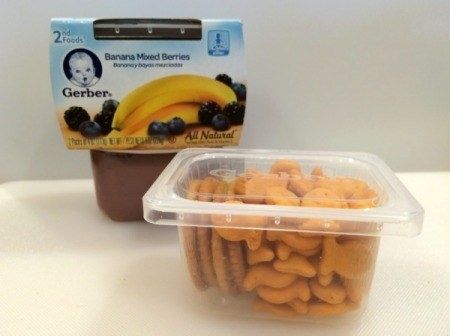
As for using it as a quick snack-food alternative, "If you'd be grabbing candy or white flour, then yeah, go for baby food," she says. "But you can't take baby food with you when you go out for dinner or to a party."
Sometimes, you just have to act - and eat - your age.
Master List of Baby Snacks (Easy Finger Foods + Recipes)
Make snack time easier with this Master List of Baby Snacks. You’ll find the best easy and healthy finger foods for babies and one year olds that are simple to prepare and serve—and also super yummy!
Baby Snacks
Once your sweet baby has started solids, generally has the hang of things, and you’re ready to add in some snacks…it can be hard to know what to offer. And this post is here to help! You will find easy baby snacks organized by food group, the best homemade recipes to try, and tips for serving food to this age group to ensure they are yummy and easy to eat.
TIP: Depending on the baby, how much they are nursing or drinking from bottles, and the schedule of your day, you may or may not have time to add in snacks. You can start them around 9 months or at 12 months—whatever works best for your family and the appetite of your child.
You can start them around 9 months or at 12 months—whatever works best for your family and the appetite of your child.
Snacks for 9 Month Old Babies
At about 9 months, babies develop the pincer grasp, or the ability to pick up small (think the size of a pea) pieces of food. This usually opens up a whole wide range of foods that babies can feed themselves—and that is primarily the types of foods you’ll find in this post, along with some pureed options to round things out.
TIP: Find my Master List of Early Finger Foods to refresh your memory on all of the many food options you can serve at any meal to babies starting at age 9 ish months.
Sugar-Free Banana Muffin with RaspberriesSnacks for One Year Olds
Many one year olds from ages 12 months through 16-18 months are in this same category of eating small pieces of finger foods, so any of these foods are appropriate for them too. (Actually, they are of course appropriate for any age, though kids past that 18 month mark are more able to take bites from larger pieces of food. )
)
TIP: Find my One Year Old Feeding Schedule here.
Cheerios with Carrot Puree PouchBaby Snacks: Fruits and Veggies
These produce-based snacks are great options to have in the mix. I like to pair them with another food group if possible (though baby won’t always eat perfectly balanced snacks and that’s okay!).
- Baby Food Pouches
- Mashed roasted sweet potato, broken up into small pieces
- Warmed frozen peas
- Roasted Zucchini, diced small
- Diced Roasted Sweet Potato or Butternut Squash
- Fresh blueberries, cut in half or quarters
- Fresh raspberries, broken into small pieces
- Frozen fruit, warmed and fully thawed and chopped (such as blueberries, raspberries, strawberries or mango)
- Freeze-dried fruit (it dissolves very fast)
- Banana, broken into small segments (they are less slippery this way versus slicing them)
- Avocado, diced and mashed slightly (be sure it’s ripe and very soft)
Carbohydrate Snacks for Baby
Babies (and kids!) need carbohydrates in their diets, and we need to serve them often. Look for whole grains when possible to incorporate fiber and B vitamins. Combine with produce or protein at snack time.
Look for whole grains when possible to incorporate fiber and B vitamins. Combine with produce or protein at snack time.
- Spinach pancakes diced (these are great to freeze and pull out of the freezer to warm one at a time)
- Baby Puffs
- Peanut Butter Puffs
- Baby Banana Muffin
- O cereal (soften in nondairy unsweetened milk or yogurt as needed)
- Chex cereal (soften in nondairy unsweetened milk or yogurt as needed)
- Diced whole grain bread with applesauce or any fruit puree, or mashed avocado
- Baked Oatmeal, diced
- Leftover pasta, rice, or oatmeal
- Sweet Potato Teething Biscuits
Protein Snacks for Baby
Incorporating protein and healthy fats into baby’s food is a great way to help them find their food filling and satisfying until the next eating opportunity. Look for full fat dairy to ensure baby gets the fats they need for brain development and combine with another food group at snack time.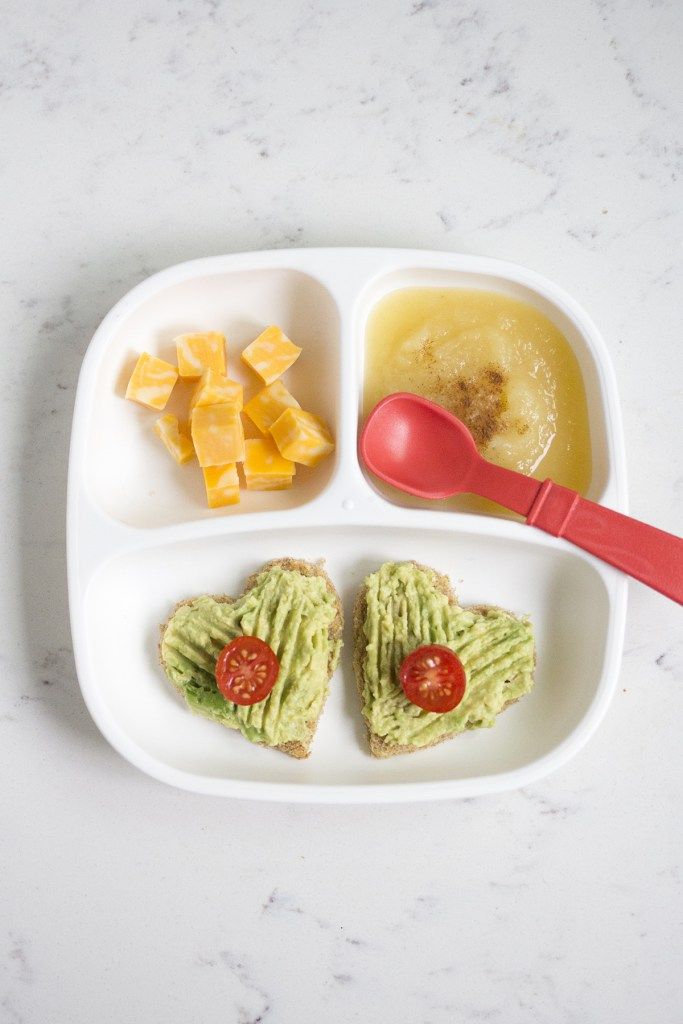
- Shredded cheese (thicker cuts are a little easier to pick up, mozzarella tends to be softest)
- Crumbled goat cheese
- Tofu, diced and sauteed lightly or steamed
- Lightly mashed or diced meatballs
- Shredded chicken, cut up finely (we love this Butter Chicken to share with baby)
- Ground beef, turkey, or chicken, cooked and broken into smaller pieces
- Lightly mashed beans
- Warmed frozen peas
- Scrambled eggs, broken up into small pieces
- Diced egg muffins
- Yogurt (plain whole milk)
- Homemade Yogurt Melts
- Cottage cheese
- Simple smoothie (made with plain nondairy milk or yogurt)
Snacks to Serve Baby in a Pouch
Reusable pouches are super handy for babies and one year olds (and older toddlers too!). We love the 3.5 ounce Squeasy Gear silicone pouch since it’s virtually spill-proof. I started using it around 7 months with my kids to offer foods including yogurt, simple smoothies, warm (not hot) pureed soups, overnight oats, and all sorts of Homemade Baby Food Pouches.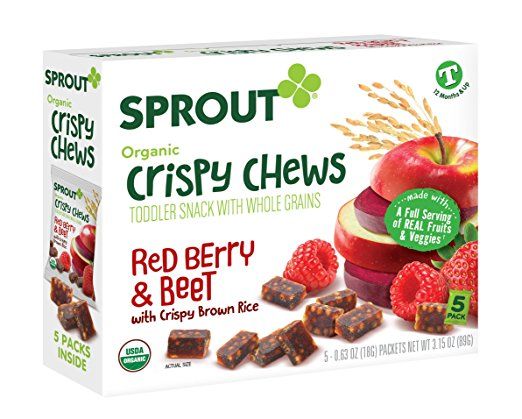
The Wee Sprout BPA-free pouches are also great and are very easy to wash.
Peas and scrambled eggsWhat’s the right portion for my baby?
There’s no “right” portion size, so my advice is to start with a very small amount to avoid food waste and offer more according to baby’s hunger—which may be more or less than you expect. Follow their lead as they are very in tune with their own hunger and fullness cues.
When should I feed baby snacks?
Typically, babies eat every 2-3 hours, so you will want to work the meals in between nursing or bottle sessions and naps. This can be hard to do until baby is closer to the 12 month mark, just logistically speaking, so don’t feel like you must do snacks if you can’t find the time and baby is getting plenty of calories from milk feedings and other meals.
What are the best foods for snacks?
I like to think of snacks as mini meals and serve all sorts of foods. This can help ensure that the littles are being introduced to all sorts of foods throughout the day and makes it easier to use up leftovers!
Best Store Bought Snacks for Littles
In addition to the single ingredient foods you can buy at the store, these packaged snacks are convenient ones to have on hand for snack time.
- 12-Grain Mini Round Crackers from Trader Joes (these are softer than most other crackers)
- Amara Organic Smoothie Melts
- Baby food pouches
- Baby Yogurt (without added sugars)
- Baby Puffs
- Chex cereal (soften in nondairy unsweetened milk or yogurt as needed)
- Diced whole grain bread with applesauce or any fruit puree, or mashed avocado
- Freeze-dried fruit
- Peanut Butter Puffs
- O cereal (soften in nondairy unsweetened milk or yogurt as needed)
TIP: The Amara Smoothie Melts are a brand new snack option. They’re made with fruits and veggies and have a melt-in-the-mouth texture. My kids love them! (sponsored link)
Best Recipes for Healthy Baby Snacks
If you want to make some snacks at home that are a little more than just single ingredient foods, here are my top picks.
- Apple Puree
- Applesauce Overnight Oats
- Apple Yogurt
- Baby Food Combinations (any of these work!)
- Baked Oatmeal Bites
- Banana Yogurt
- Egg Muffins with Veggies
- Mango Smoothie
- Peanut Butter Puree
- Pear Puree
- 60-Second Scrambled Egg
- Simple Green Smoothie (use nondairy plain milk)
- Soft-Baked Granola Bars (closer to 12 months)
- Spinach Banana Pancake
- Sugar-Free Banana Muffins
- Sweet Potato Yogurt (with plain yogurt)
TIP: My favorite storage containers for kids snacks include the WeeSprout glass containers (shown below on the left with the colorful lids), the Beaba Clip Containers, and the Wean Green Storage Cubes.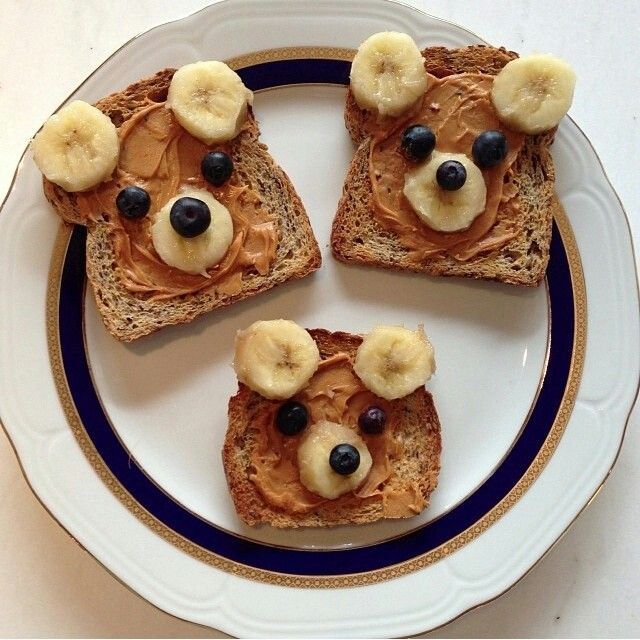
Best Tips for Baby Snacks
- Aim to offer 2 foods (or more) from different food groups at each snack so baby has the opportunity to have a mix of nutrients.
- Aim for at least one of the foods to have fat and/or protein to help baby feel satisfied.
- If a food seems too slippery for baby to pick up or they’re otherwise having trouble, put the food onto a utensil, cut it differently, or otherwise help them eat the food.
- Try to avoid serving meals or snacks when baby is tired or is specifically hungry for their milk feedings—it takes them a while to connect solid food as a way to satisfy hunger, so be patient with that process of learning.
- Start with small portions to avoid food waste and offer more according to baby’s unique hunger.
- It can take kids time to learn to like a wide range of foods, so offer a range of foods throughout the week—and offer foods they didn’t eat (making sure it’s easy to eat and tastes good) so they have the chance to learn to like them.

- Keep meals free from pressure and fun without forcing baby to eat a certain amount of food.
- Sit with baby as you can and model eating so they have someone to copy—they are new to this and the more information they have (visual, verbal, etc), the better they can learn!
If you have any questions about feeding your baby or one year old, or any of these food suggestions, comment below and I will do my best to help!
Prep Time 5 minutes
Cook Time 0 minutes
Total Time 5 minutes
Author Amy Palanjian
Cuisine American
Course Baby Food
Calories 85kcal
Servings 1
Fruit and Veggie Snacks (start with 1-2 tbsp and offer more according to hunger)
- ▢ 1-2 tbsp Avocado diced and mashed slightly (be sure it’s ripe and very soft)
- ▢ 1-2 tbsp Banana broken into small segments (they are less slippery this way versus slicing them)
- ▢ 1-3 ounces Baby Food Pouches
- ▢ 1-2 tbsp Blueberries cut in half or quarters
- ▢ 1 Clementine chopped into small pieces
- ▢ 1-2 tbsp Mango chopped into small pieces
- ▢ 1-2 tbsp Mashed roasted sweet potato broken up into small pieces
- ▢ 1-2 tbsp Peas
- ▢ 1-2 tbsp Raspberries broken into small pieces
- ▢ 1-2 tbsp Roasted Zucchini diced small
- ▢ 1-2 tbsp Roasted Sweet Potato or Butternut Squash diced
Carbohydrates (start with 1-2 tablespoons and offer more following baby's lead)
- ▢ 1 Baby Banana Muffin
- ▢ 1-2 tbsp Baby Puffs
- ▢ 1-2 tbsp Baked Oatmeal diced
- ▢ 1-2 tbsp Chex cereal soften in nondairy unsweetened milk or yogurt as needed
- ▢ 1-2 tbsp Leftover pasta rice, or oatmeal
- ▢ 1-2 tbsp O cereal soften in nondairy unsweetened milk or yogurt as needed
- ▢ 1-2 tbsp Peanut Butter Puffs
- ▢ 1 Spinach pancakes diced these are great to freeze and pull out of the freezer to warm one at a time
- ▢ 1/4 slice Whole grain bread diced with applesauce or any fruit puree, or mashed avocado
Protein Snacks (start with 1-2 tablespoons and offer more following baby's lead)
- ▢ 1-2 tbsp Beans lightly mashed
- ▢ 1-2 tbsp Cheese shredded (thicker cuts are a little easier to pick up, mozzarella tends to be softest)
- ▢ 1-2 tbsp Cottage cheese
- ▢ 1 Egg muffins diced
- ▢ 1-2 tbsp Goat cheese crumbled
- ▢ 1-2 tbsp Ground beef turkey, or chicken, cooked and broken into smaller pieces
- ▢ 1-2 tbsp Hummus
- ▢ 1 Meatball lightly mashed or diced
- ▢ 1-2 tbsp Peas
- ▢ 1 Scrambled eggs broken up into small pieces
- ▢ 1-3 ounces Simple smoothie made with plain nondairy milk or yogurt
- ▢ 1-2 tbsp Shredded chicken cut up finely (we love this Butter Chicken to share with baby)
- ▢ 1-2 tbsp Tofu diced and sauteed lightly or steamed
- ▢ 1-2 tbsp Yogurt plain whole milk
Choose 2 single ingredient foods (or more) or 1 food that is made from a mix of foods (like a pancake or egg muffin).
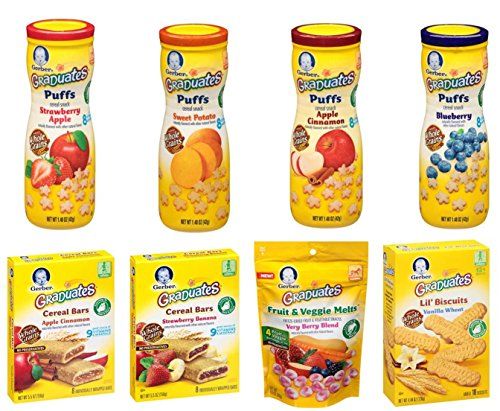
Cut up into small pieces or mash lightly.
Serve to baby, offering preloaded spoons as needed to help them eat. (It's okay if baby gets messy as they learn to eat, that's part of the process!)
Start with a small portion and serve more according to baby's hunger—it's okay if they eat more or less than you expect!
Offer water with snacks (and meals).
Store any leftovers in an airtight container in the fridge for 3-5 days.
Reusable Pouch
Storage Containers
Mixing Bowl
- Aim to offer 2 foods (or more) for each snack so baby has the opportunity to have a mix of nutrients.
- Aim for at least one of the foods to have fat and/or protein to help baby feel satisfied.
- If a food seems too slippery for baby to pick up or they're otherwise having trouble, put the food onto a utensil, cut it differently, or otherwise help them eat the food.

- Try to avoid serving meals or snacks when baby is tired or is specifically hungry for their milk feedings—it takes them a while to connect solid food as a way to satisfy hunger, so be patient with that process of learning.
- It can take kids time to learn to like a wide range of foods, so offer a range of foods throughout the week—and offer foods they didn't eat (making sure it's easy to eat and tastes good) so they have the chance to learn to like them.
- Keep meals free from pressure and fun without forcing baby to eat a certain amount of food.
- Sit with baby as you can and model eating so they have someone to copy—they are new to this and the more information they have (visual, verbal, etc), the better they can learn!
Calories: 85kcal, Carbohydrates: 2g, Protein: 4g, Fat: 7g, Saturated Fat: 3g, Polyunsaturated Fat: 1g, Monounsaturated Fat: 3g, Cholesterol: 16mg, Sodium: 94mg, Potassium: 90mg, Fiber: 1g, Sugar: 1g, Vitamin A: 173IU, Vitamin C: 2mg, Calcium: 110mg, Iron: 1mg
Tried this recipe?Rate in the comments and tag @yummytoddlerfood on IG!
Snacks for Kids - Encyclopedia Baby Food
Viktoria Levchuk© One of the most common questions we ask at an early stage of nutrition concerns what foods to serve babies during a snack. Let's take a look at how to include snacks in your kids' daily meals, how to plan healthy snacks, and what foods to include.
Let's take a look at how to include snacks in your kids' daily meals, how to plan healthy snacks, and what foods to include.
Contents:
Snack is an intermediate meal that allows the baby to wait until the main meal. It is believed that second breakfast and afternoon snack are snacks. Only I often forget about it, because I think children should have 5 meals a day. And snacks in my family are force majeure circumstances, when the main meal (5 meals with us) is still far away, but I want to eat now. Then you can have a snack, the older child usually chooses a piece of cheese, and the younger one - fruit. During periods of active growth, snacking does not affect the intake of the main meal. At such moments, it seems to me that they eat around the clock.
As part of a healthy diet, babies should be offered 2-3 snacks throughout the day. One half morning (between breakfast and lunch), one half afternoon (between lunch and dinner) and an optional evening snack. This helps children maintain their energy levels and provide them with important nutrients that will support their growth, development and learning.
This helps children maintain their energy levels and provide them with important nutrients that will support their growth, development and learning.
The best snacks are nutritious - low in sugar, fat and salt. Fresh fruits and vegetables, as well as foods containing whole grains and protein, are good choices.
Snack time
It is recommended to offer a snack at the same time each day. This allows children to establish a proper eating pattern that helps them control their appetite. Ideally, there should be about 2-3 hours between each meal and snack. Offering too close together, such as having a snack at 10:30 and lunch at 11:30, can reduce the child's appetite for the main meal.
Introducing snacks into the daily routine is always a problem, especially if the child is still small before 12 months. Therefore, I advise you to adhere to the garden regimen. Attaching photo. As snacking is gradually introduced, I had a whole series of articles in the beginning of complementary foods.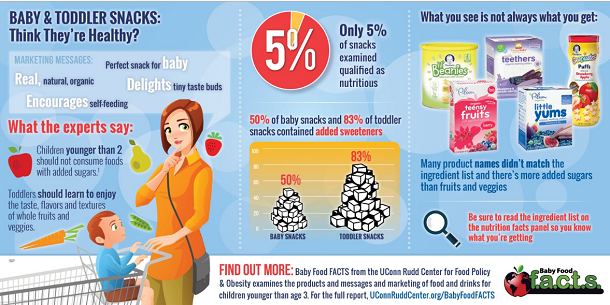
The ideal meal time should be about 20-30 minutes. This is enough time for kids to eat as much as they need without feeling fussed or losing interest. Of course, some children may spend more time eating than others, so it is important to be aware of their individual needs.
Preschool children have 3 main meals and 2-3 additional (snacks). Often snacks are a full meal of the main meal, but in a reduced portion. There are also just snacks, one piece of fruit or a bagel. It is important to understand here that a piece of food that was given at an unplanned time should be minimal and satisfy hunger, and not the need for love, attention or care.
From the book Clinical Dietetics of Childhood. Guide for doctors.» Edited by T.E. Borovik, K.S. Ladodo
Clinical dietology of childhood. T.E. Borovik, K.S. Ladodo
Snack portion
As mentioned above, a snack is necessary to satisfy hunger between main meals. Therefore, the portion of the snack should be less than the main meal.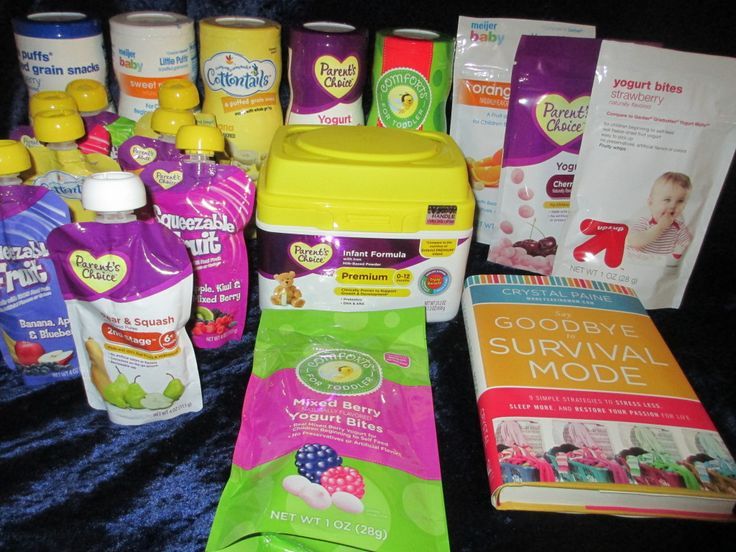 But keep in mind that the stage of growth and development of the child, age, appetite and activity will play a role in deciding what serving size is right for the baby. The standard portion is equal to the fist of the child. But you have to choose individually. And it’s better to trust the baby, for them, intuitive eating at the very beginning is ideal. If you haven’t finished eating, then it’s okay, he eats more during dinner. The main thing is not to feed anymore, only water and do not give water 20 minutes before the main meal.
But keep in mind that the stage of growth and development of the child, age, appetite and activity will play a role in deciding what serving size is right for the baby. The standard portion is equal to the fist of the child. But you have to choose individually. And it’s better to trust the baby, for them, intuitive eating at the very beginning is ideal. If you haven’t finished eating, then it’s okay, he eats more during dinner. The main thing is not to feed anymore, only water and do not give water 20 minutes before the main meal.
Snack up to a year
Snack up to a year consists of foods that are included in the baby's complementary foods. The main thing here is to consider how the baby eats finger food. If the second breakfast consists of fruits, then we watch how the baby chews, if it’s bad, then we give fruit or vegetable purees.
introducing solid foods handwritten schedule
There are two common “traps” to avoid with babies because they will be difficult to reverse later:
- than other foods and can lead to unhealthy eating
- comforting children with a pre-meal snack, which can reduce their hunger and make them less willing to try new foods at the table
It is important to understand here that snacking until one year of age is not only a meal to satisfy hunger, but also teaching proper snacking. Giving sugary buns, candy, and sugary foods for snacking will give the child the impression that it is a great meal, but it is not. Sweets are dessert after a meal. We try to follow the basics of proper nutrition.
Giving sugary buns, candy, and sugary foods for snacking will give the child the impression that it is a great meal, but it is not. Sweets are dessert after a meal. We try to follow the basics of proper nutrition.
How to create a snack for up to a year
A snack for up to a year is formed gradually as the children's menu is formed. Menu examples in the article here, a very large list. When I introduced complementary foods to my youngest child, I described this in every article. So now just a photo from those posts. Everything happens gradually. We give the first product about 10 hours, i.e. in the first half of the day. We feed the baby this way for a while, and we form the habit of getting food at 10 in the morning. This is the second feeding. Then we introduce the second product, and we move the first to the third feeding. Such a replacement gradually forms 5-6 meals a day with complementary foods. It is described in more detail in the article Menu for the child in the paragraph How to make a menu for the child. Photo duplicated above.
Photo duplicated above.
Snack for preschoolers
It's easier with preschoolers because most children go to kindergarten. 5 days a week the child lives according to a strict regime, which is not supported on weekends, then once to parents, then other things. And this is not correct. On the part of parents, it is ideal to maintain a garden regimen at home both on weekends and during holidays and illness. Do not make exceptions, then the habit of snacking properly will form and it will be easier in adolescence. It is also important to note a snack without cartoons and at the table or sitting on a bench (if the child is outside).
Preschoolers are just learning to label their feelings and they say, "I'm hungry." But they may just be bored, tired, or in need of attention. Therefore, we find out what the child really needs. It is possible that some activity with the parent or a change of scenery can do away with the cries of "I'm hungry."
We also take into account hungry tantrums, when the baby is really hungry, he can enter into emotional instability when everything is bad.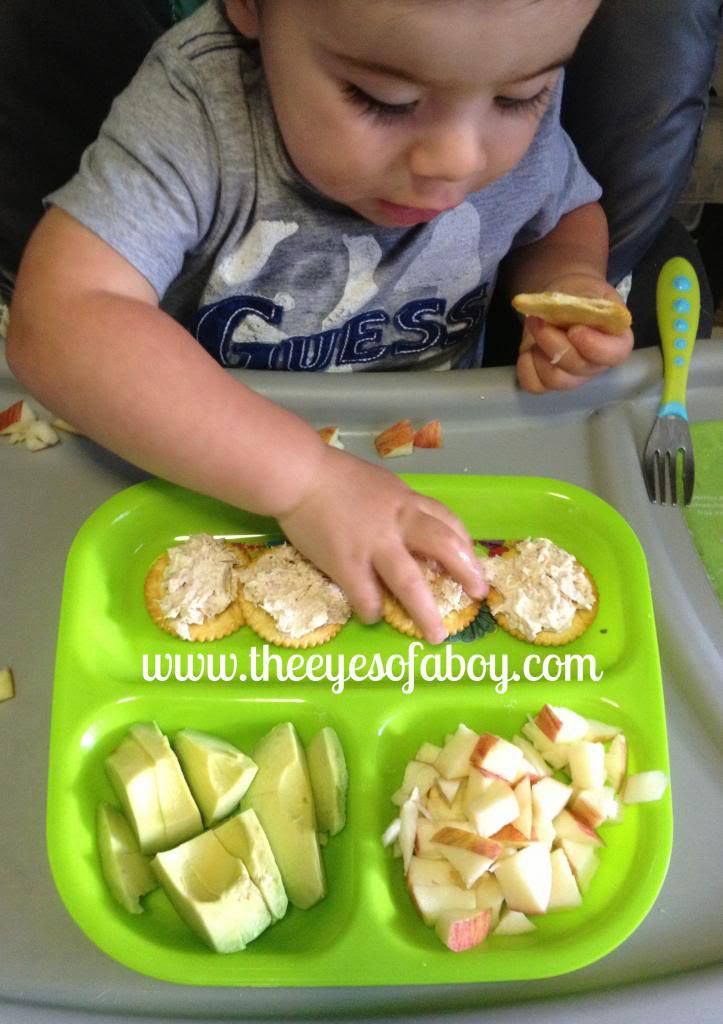 It is very difficult to calm a hungry child in hysterics. We just hug and wait for the first strong emotions to subside. We don’t fall into the trap with candy, he should calm down himself, drink some water at the end, and then have a snack with something healthy, but not sweet.
It is very difficult to calm a hungry child in hysterics. We just hug and wait for the first strong emotions to subside. We don’t fall into the trap with candy, he should calm down himself, drink some water at the end, and then have a snack with something healthy, but not sweet.
Snack schoolchildren
Things are more complicated with schoolchildren. Because at first they are schoolchildren and a little later they are teenagers with an interesting character, which is actively growing, wants to eat, but eats out of harm anyhow, while the mother does not see. Therefore, if at the very beginning the child had a proper snack, then there should be no problems. Only parents will have to organize snacks.
Buy the necessary food and keep it ready in the refrigerator. In short, prepare snacks every day, or teach your child how to cook them. So that the child does not eat any filth, and he will have such a period, there should be no prohibitions in the family.
We drink Coca-Cola and eat chips, but rarely and on holidays, I usually explain that this food is poorly digested and if you eat it every day, the stomach will not withstand such a load, but rarely for pleasure.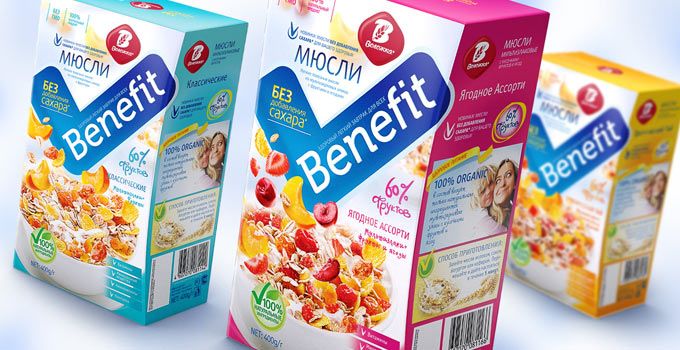
Doctor_Annamama, I have a question: #How to feed a baby? A.V. Levadnaya
Doctor_Annamama, I have a question: #How to feed a baby? A.V. Levadnaya
Doctor_Annamama, I have a question: #How to feed a baby? A.V. Levadnaya
Eating out can be a challenge, especially when children are old enough to choose their own food. But if the ground has been prepared from the start—providing a varied selection of nutritious foods at home and good alternatives away from home—they are more likely to eat something healthy when hunger strikes.
Multi-toeds and small-toeds
All children are different, they eat individually. Some people like to eat a lot, and some people don't. For some, an afternoon snack and a second breakfast completely discourages appetite, while for other children, eating 5-6 times a day is very little. I have an older child. During the period of active growth, he eats all day. It is difficult to catch him without food in his mouth. And he's picky. How does it fit into it?
And he's picky. How does it fit into it?
The younger one eats steadily. He is satisfied with 2 snacks a day, which are not plentiful and light. He calmly wakes up, has a snack and goes for a walk, and then has a hearty dinner and drinks breast milk before going to bed.
Therefore, dear parents, we take into account the individuality of the child. If you see that he does not eat the main meals well, then we reduce the additional snacks in size. If after that the child does not eat well, then write down all the food that he chews. Usually parents do not even see how much food falls into the baby's tummy from an adult table in between.
Therefore, for the first five years, the habit of putting all the snacks on the far shelf. The child should not have access to snacks. He receives food from your hands, at the common table. And not like climbing into the refrigerator and eating cake! From the age of three, you can leave portions of a snack on the table, but the size and type that is allowed for the child. After 5 years, we teach him to cook snacks from food. The same sandwich, a glass of milk, a piece of bread or a cookie. So that the baby can feed himself urgently.
After 5 years, we teach him to cook snacks from food. The same sandwich, a glass of milk, a piece of bread or a cookie. So that the baby can feed himself urgently.
What snacks to give?
Snacks are a great opportunity to offer children a range of nutritious foods. Variety is a key factor in this matter, so we try to diversify the child's diet. Planning a snack menu to ensure a balanced diet throughout the week:
Child's snack
It is important to note that sugary foods are a dessert, not a snack. Therefore, we avoid cakes, muffins, cookies and sweets as a snack. The exception is cookies with a minimum of sugar, fat and salt, usually such a product is given to babies up to a year old as a quick snack at home and on the street.
Water is supplied with any snack. It is better to use ordinary fresh water, rather than compotes or tea. The exception is a glass of milk, it is given in the evening snack or for an afternoon snack.
Second breakfast
Traditionally, the second breakfast consists of fruits and vegetables. A child can be given one apple, cucumber, banana, etc. In the kindergarten, they give mainly apples and tangerines, or fruit juice. Therefore, at home we try to diversify the second breakfast. You can cut a few fruits and serve on a plate.
A child can be given one apple, cucumber, banana, etc. In the kindergarten, they give mainly apples and tangerines, or fruit juice. Therefore, at home we try to diversify the second breakfast. You can cut a few fruits and serve on a plate.
From the book Clinical Nutrition of Childhood. Guide for doctors. Edited by T.E. Borovik, K.S. Ladodo
Clinical dietology of childhood. T.E. Borovik, K.S. Ladodo
Clinical dietology of childhood. T.E. Borovik, K.S. Ladodo
An example for different age groups:
- Milk, kefir, juice
- Fresh fruits
We will also list examples of diet food dishes from the above book:
Examples of an afternoon snack from the books "Nutrition for children of early and preschool age" V.G. Kislyakovskaya L.P. Vasilyeva, D.B. Gurvich and "Handbook of Children's Diet" Medicine 1980. Very similar menus.
from 1 year to 1.5 years
- kefir 150 grams
- Cookies 15 grams 15 grams / Pie with jam 60 grams / Muffin 50 grams
- Apple 50 grams
from 3 to 7 years old
- Kefir 200 grams
- cookies 35 grams
- Apple 75 grams
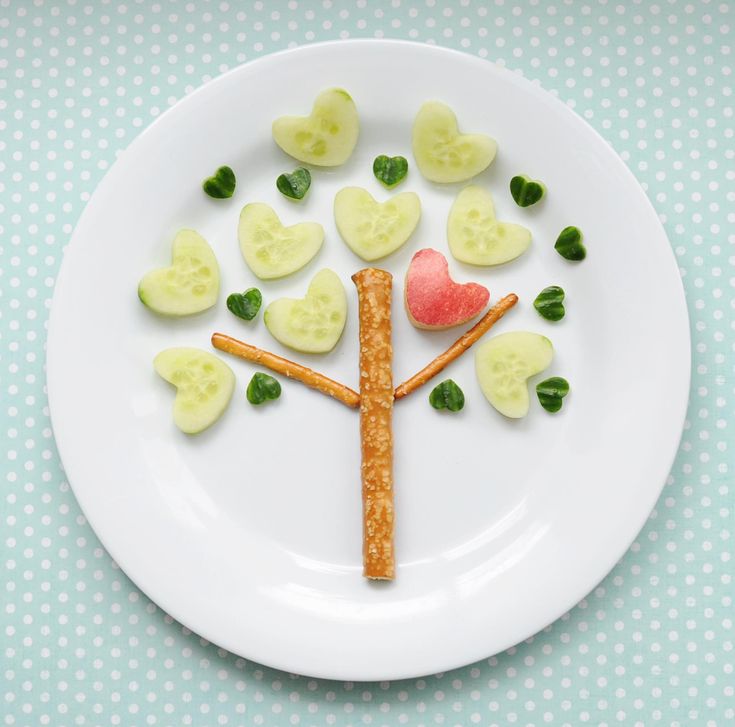 Ladodo L.V. Druzhinina "Products and dishes in baby food":
Ladodo L.V. Druzhinina "Products and dishes in baby food": From 1 to 1.5 years
- Milk with sugar/Kefir with sugar
- Cookies/Crackers/Corn sticks
- Fresh fruit
from 1.5 to 3 years old
- kefir/milk
- baking with jam/cheesecake/home buns
- Fresh fruits or berries
from 3 to 7 years
- KEFIR/Molco Pig. dried apricots / Wafers / Homemade bun
- Fresh fruit / Baked apple / Fruit puree
From the book Clinical Dietetics of Childhood. Guide for doctors. Edited by T.E. Borovik, K.S. Ladodo
Example for different age groups:
- Milk, kefir, tea
- baking/cookies, waffles
- cottage cheese
- Fresh fruits
We also list examples of dietary diet from the above book:
- Bill, , Moloko,
Menu from our kindergarten:
- Cod fish cutlet – 80 grams
- Business pasta 150 grams
- Coffee drink with milk - 200 grams
- Wheat bread - 40 grams
- Tomatnaya sauce - 50 grams
- 9004 gram 9005 grams 9005 GROMITARY 60 GROMITARY 60 GREEMES OF CONT – 40 grams
- Tea with sugar – 200 grams
- Cheesecake with cottage cheese – 70 grams
- Cookies 50 – grams
- Boiled milk 200 grams
- Milk sweet sauce -50 grams
- lazy dumplings -150 grams
- Tea with sugar -200 grams
- wheat bread -40 grams
- Caviar caviar
- Coffee drink 200 grams
- Confectionery 50 grams
- Wheat bread 31 grams
- Boiled rice 150 grams
- Pollack fish in tomato
- 0054
- porridge rice Liquid with butter 200 grams
- Kefir 200 grams
- Piery 90 grams
905 grams 20053 breeze We take it into account, which is buzzing, lender, led by bump that some children do not eat fish, cottage cheese, milk porridge, so that they have a choice, and they can wait for dinner or their parents. kindergarten menu Porridge for an afternoon snack is a family preference, I rarely do this. It’s also not customary for me to eat porridge in the morning and for an afternoon snack, so if in the morning there were eggs, pancakes, dumplings, then porridge for an afternoon snack, and vice versa. And in the kindergarten there is always milk porridge, I don’t cook like that at home, we have 2 times a week with milk. But these are the nuances of a family for snacks, adjust for yourself, I indicated examples. Evening Snack is usually given during the child's active growth period. Examples from the books "Nutrition for children of early and preschool age" V.G. Kislyakovskaya L.P. Vasilyeva, D.B. Gurvich and “Clinical dietology of childhood. Guide for doctors.» Edited by T.E. Borovik, K.S. Ladodo Kefir 90-150 grams up to 3 years, 200 grams from 3 years and older. We also list examples of diet food dishes from the above book: It is ideal not to let your child snack on the street, especially if he is sitting in a stroller or running around. And it's hard to guess how much time you have to spend on all these force majeure cases. But try to eat at home. Although there are periods of exceptions. So last year in the summer we ate a second breakfast on the street, found a bench, wiped our hands and ate a pre-prepared lunchbox. I took fruits, fruit purees, vegetables, yogurt, etc. We had a mini picnic. But my baby did not eat well in the morning, and the second breakfast was denser than the first. If an adult eats unhealthy snacks, without measure or reason, then what to expect from a child? He sees a vivid example of intermediate nutrition and wants to repeat it. It's natural for a baby! The task of parents is to get rid of harmful snacks and replace them with healthy ones. Better a personal example than a thousand words. As I wrote earlier in the article “Eating Habits”, there are no prohibitions, harmfulness is possible, rarely and in small portions. As a result, the child will make the right conclusions in favor of health. But you have to start with yourself. We replace sweets with nuts, cola with water, chips with dried apples (they also crunch), etc. And here it is worth pointing out that if snacks for children start with parents , then it is adults who choose a healthy type of snack. And it is they who plan a variety of tasty and healthy snacks for the baby. What is the responsibility? Is not it? It sounds complicated, but it's easy to do. We just start shaping snacks with the start of complementary foods, introducing healthy options into both baby food and adult food. Within 2-3 years, 4 types of menus can be formed according to the season. And achieve up to 20-30 healthy snacks. And more is not necessary. You can buy some, the same yoghurts or cottage cheese (we take into account the minimum sugar), fruits, vegetables, and cook some at home - muffins, cookies, smoothies, etc. Here are some tips to use when shopping for healthy snacks for children: Here are some healthy snacks you can make at home without recipes. Of course, you can buy a snack, but it is healthier to cook it yourself at home and teach your children this.
 At home, you can reduce portions and diversify your afternoon snack with fruit. Also in the garden they give casseroles for an afternoon snack, for some reason I did not photograph this menu. It is also important to note that meat is given for lunch, and fish is given for an afternoon snack, but not every day. It seems to me 3 times a week, if I counted correctly.
At home, you can reduce portions and diversify your afternoon snack with fruit. Also in the garden they give casseroles for an afternoon snack, for some reason I did not photograph this menu. It is also important to note that meat is given for lunch, and fish is given for an afternoon snack, but not every day. It seems to me 3 times a week, if I counted correctly. Evening Snack
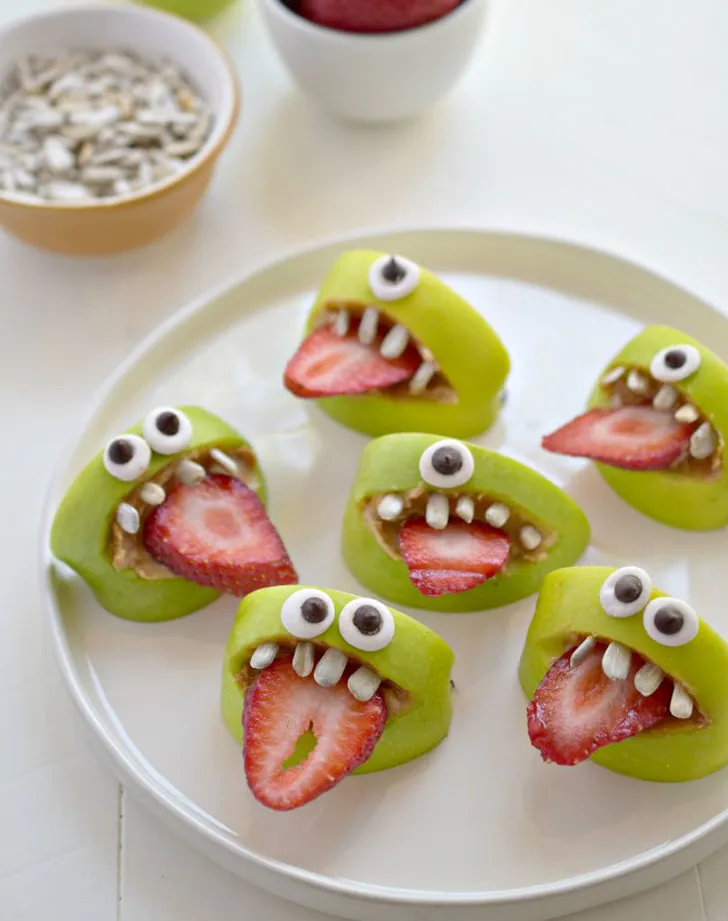 Example, a glass of milk with bread, kefir or yogurt, matsoni. Dairy products are given before brushing teeth, as lactic bacteria can cause cavities. For breastfed babies, the snack consists of breast milk. Evening feeding is always removed last, so this snack can be very long. But we take into account that during the active period of growth, the baby can eat regular food and drink breast milk, and this is normal. Don't worry! Some children sleep well only on a full stomach. But still we try to give products that saturate, but do not complicate the work of the digestive tract, which should rest at night.
Example, a glass of milk with bread, kefir or yogurt, matsoni. Dairy products are given before brushing teeth, as lactic bacteria can cause cavities. For breastfed babies, the snack consists of breast milk. Evening feeding is always removed last, so this snack can be very long. But we take into account that during the active period of growth, the baby can eat regular food and drink breast milk, and this is normal. Don't worry! Some children sleep well only on a full stomach. But still we try to give products that saturate, but do not complicate the work of the digestive tract, which should rest at night. Example for different age groups:
Snacking outdoors
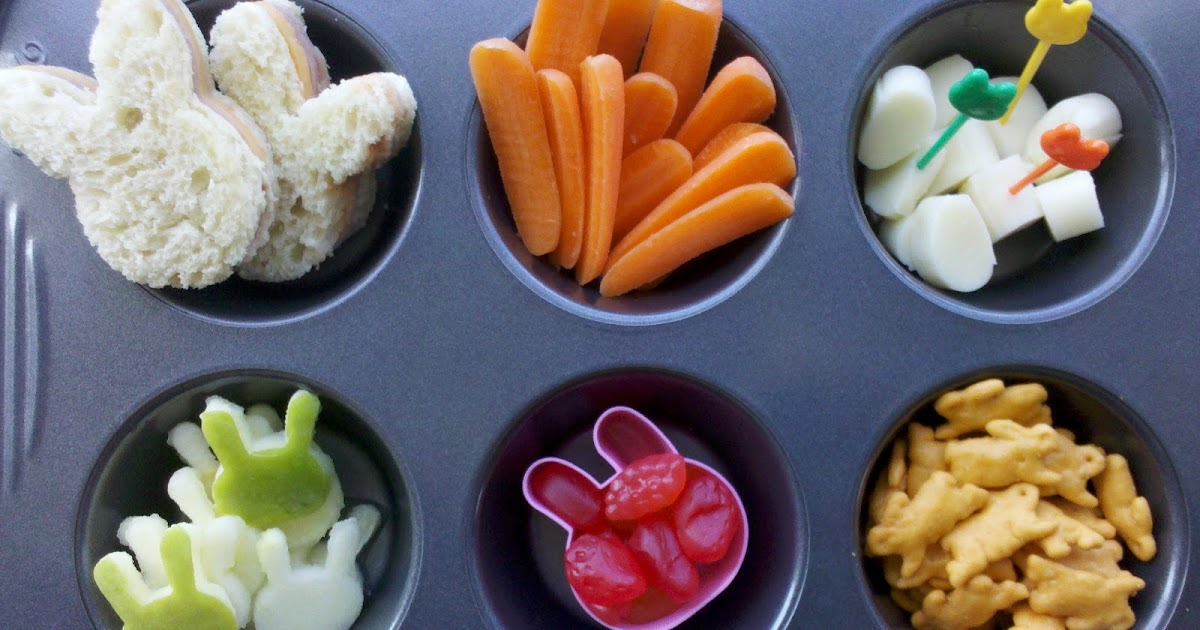 Here the rule works: once you have taught and you will not unlearn. Keep in mind that the baby is growing, will learn to talk and hysteria if he was not given his favorite treat. Of course, the situations are different and there is force majeure, for example, a clinic during the period of time when the baby should sleep or eat. This is life and you can't run away from it. I always took a snack with me to such places because the child cannot tolerate stressful situations, and the clinic, the queue, shopping (long), etc. is stress.
Here the rule works: once you have taught and you will not unlearn. Keep in mind that the baby is growing, will learn to talk and hysteria if he was not given his favorite treat. Of course, the situations are different and there is force majeure, for example, a clinic during the period of time when the baby should sleep or eat. This is life and you can't run away from it. I always took a snack with me to such places because the child cannot tolerate stressful situations, and the clinic, the queue, shopping (long), etc. is stress. 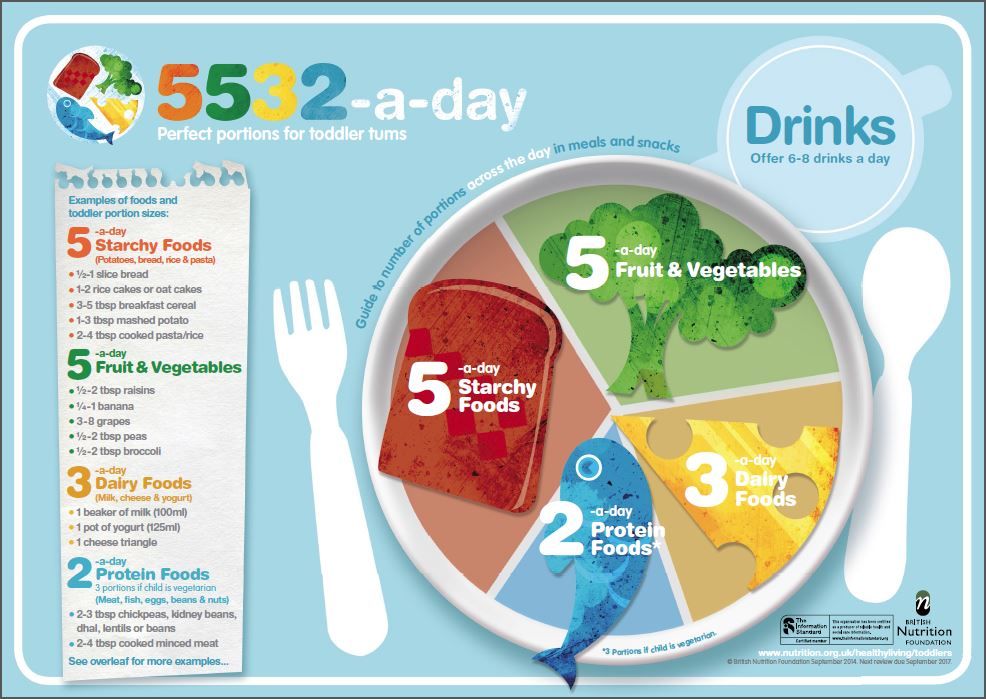 This happens, usually for a short period of time. I was just cleaning up my morning breastfeeding. This year there is no such thing, because on the street my youngest child is already interested in running and playing, he forgets about food, he flies to the children on the playground. And the first breakfast has become denser and more satisfying, he himself requires a plate of food in the morning. And before going outside, I give him some fruit that he eats while I'm getting ready. It's easier, I calmly dress, and he is busy chewing.
This happens, usually for a short period of time. I was just cleaning up my morning breastfeeding. This year there is no such thing, because on the street my youngest child is already interested in running and playing, he forgets about food, he flies to the children on the playground. And the first breakfast has become denser and more satisfying, he himself requires a plate of food in the morning. And before going outside, I give him some fruit that he eats while I'm getting ready. It's easier, I calmly dress, and he is busy chewing. Snacking starts with parents

 It sounds complicated, but it's worth trying to switch to homemade healthy snacks and you might like it!
It sounds complicated, but it's worth trying to switch to homemade healthy snacks and you might like it! How to choose a healthy snack for your child in the store
 It can be very high.
It can be very high. Sample snack for kids
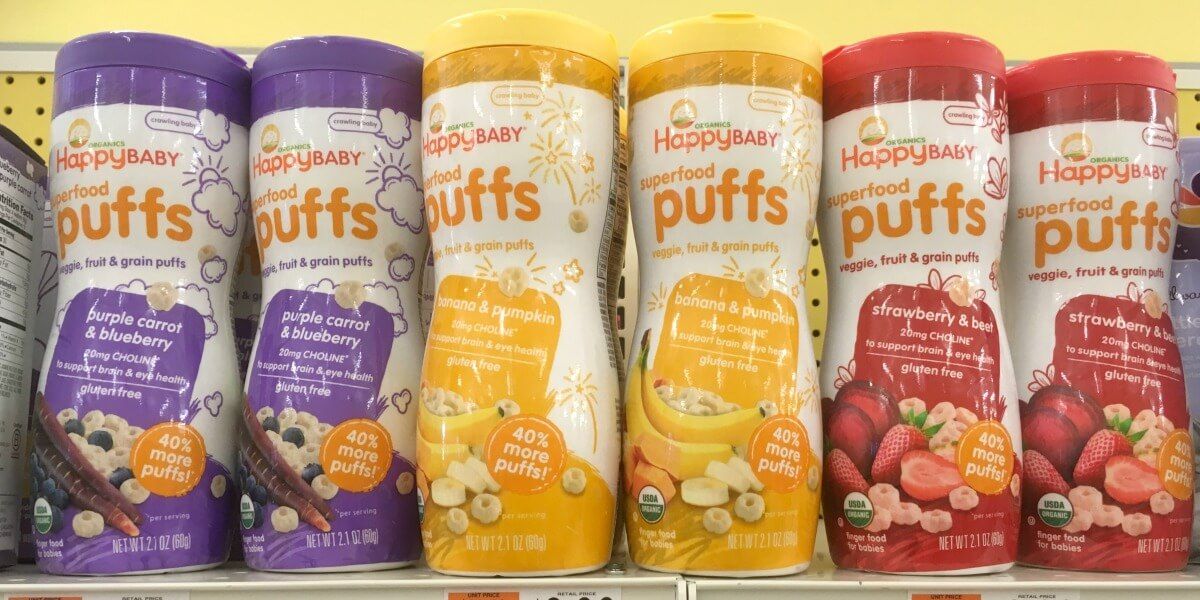
Fantasy is limitless, especially for mothers. Create culinary masterpieces, children will definitely love something.
5 Healthy School Snacks for a Child
The whole truth about how to choose a backpack for a first grader.
- Articles
- 5 Healthy School Snacks for Your Child
With the onset of autumn, all parents begin to be tormented by the question of what to give their child a snack to school, because you need the dishes to be nutritious, healthy, varied, and also convenient for quick consumption on the go without cutlery. In addition, it is necessary that the content of the lunch box is liked by the child himself and he wants to take homemade food with him.
At first glance, it seems that this task is not an easy one, but we have structured for you all the necessary information about the child's nutrition during school time and have collected the most successful recipes that will not take much time and effort.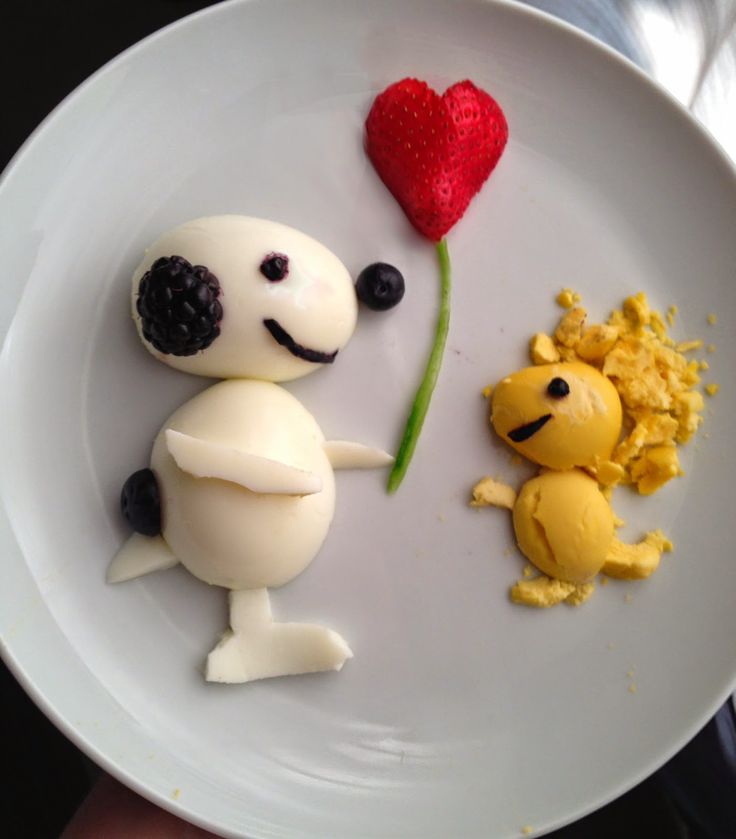
General principles for creating healthy and tasty school snacks for your child
The daily routine of a schoolchild includes 3 main and 1-2 additional meals (for more details about the daily routine for a school-age child, read our article “The daily routine of a schoolchild. Making the right routine”), so a student cannot do without a snack at school.
Understanding what should be in the child’s diet and what should not be there, you can create a wide variety of snack options based on the preferences of the student and his characteristics.
When assembling a children's school lunch box for a snack, remember that the child's body needs complex nutrition, including all the basic elements, vitamins and minerals. When choosing products, analyze whether they can retain their usefulness: freshness after lying for several hours in a backpack.
What should I give for a snack at school?
A proper and healthy snack should include:
-
Drink.
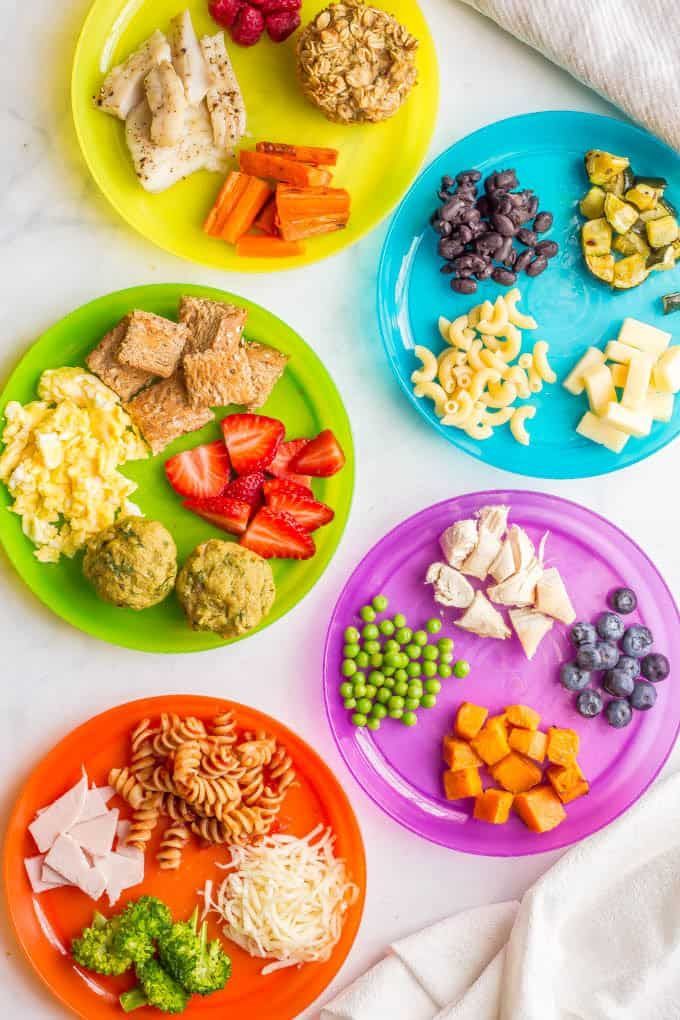 Pediatricians recommend giving preference to plain non-carbonated water and home-made compotes without sugar.
Pediatricians recommend giving preference to plain non-carbonated water and home-made compotes without sugar. -
Bread. This is the easiest and healthiest way to get carbohydrates while snacking. Just remember that it is better to buy whole grain bread or mixed with bran and seeds.
-
Protein. Depending on the child's diet and taste preferences, a protein source for a snack can be eggs, red meat (veal), white meat (chicken, turkey), or fish.
-
Fresh fruits and vegetables. With them during a snack, the child will receive useful fiber, as well as a portion of vitamins and minerals. When choosing fruits and vegetables for a snack at school, think about the convenience of eating them, for example, a cucumber would be a good option, but it is better to refuse a tomato, as they have a lot of liquid, which can get your child dirty.
-
Dairy products.
 This point is a little controversial because dairy products are essential in a child's diet, but they spoil quickly at room temperature, so milk, yoghurts and kefirs can only be given if your child will have a snack within the next hour or an hour and a half after coming to school.
This point is a little controversial because dairy products are essential in a child's diet, but they spoil quickly at room temperature, so milk, yoghurts and kefirs can only be given if your child will have a snack within the next hour or an hour and a half after coming to school.
What can not be given for snacks at school?
Everything here is quite simple and unambiguous. Schoolchildren, regardless of age, are not recommended to give as a snack sweet carbonated drinks, packaged juices, sweets in any variations (lollipops, chocolate, cakes, waffles, etc.), semi-finished meat products (sausages, sausage) and other products that do not bring any benefit to the growing organism. It is worth avoiding these products not only within the walls of the school, but also excluding or strictly limiting their intake in principle.
What to cook for a snack at school?
We have compiled for you 5 great basic PP snack recipes for school that your child will love and give him strength and energy for the whole school day.
School snack recipe #1 Lavash rolls
To prepare rolls for a snack at school, you will need the usual Armenian lavash stuffing to your liking. The main advantage of this dish is convenience. If you carefully folded the roll, then the child will not fall out while eating and he will not get dirty in the process.
So, anything can be wrapped in pita bread, and we offer the following combination: baked chicken or turkey breast, hard cheese, green salad leaves, grated fresh carrots and cucumber. You can make a wide variety of variations, including dietary or vegetarian options.
Sauces are optional, but we recommend that you do without them altogether so that all the ingredients of the filling stay fresh longer.
School snack recipe #2 Sandwiches
Sandwiches differ from classic sandwiches in that the filling is located not on one slice of bread, but between two slices, which makes this dish also convenient to eat out of the house.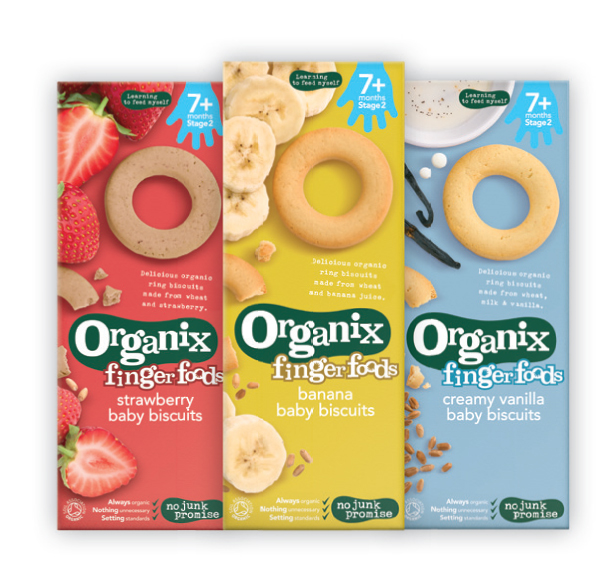
There are a lot of recipes for delicious and healthy sandwiches. Here are some non-banal ideas from us, what can be put on bread:
-
canned tuna, bell peppers and olive oil;
-
hard, salty cheese, such as cheddar and green apple or pear slices
-
cream cheese and cucumber;
-
processed cheese, sweet pepper and boiled chicken breast;
-
mayonnaise (homemade), cucumber, veal boiled pork.
School Snack Recipe #3 Pizza Buns
All children love pizza, but taking a slice of pizza to school is not at all convenient. No problem! Prepare delicious buns for your child that will taste no different from his favorite dish.
Prepare the basic yeast dough as for pizza and roll it into a thin rectangle. Lubricate it with tomato sauce and sprinkle with grated cheese. Put finely chopped ham or boiled chicken on top and roll a roll from a rectangle.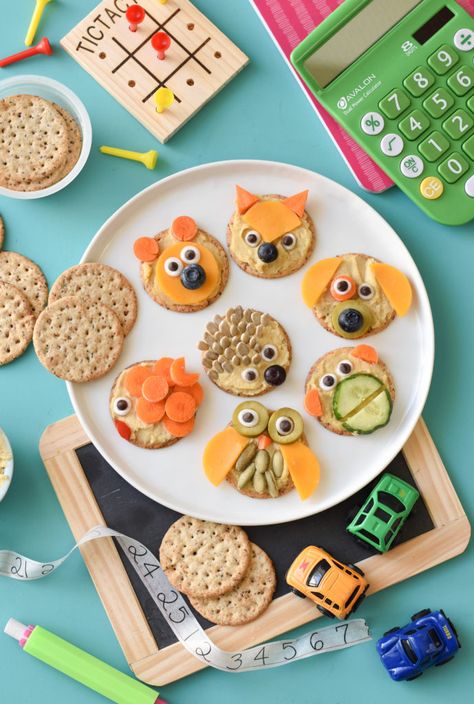 Next, cut it into circles at least 2-3 centimeters thick and place the buns on a baking sheet. Bake products at a temperature of 180 degrees for about 25-30 minutes until golden brown.
Next, cut it into circles at least 2-3 centimeters thick and place the buns on a baking sheet. Bake products at a temperature of 180 degrees for about 25-30 minutes until golden brown.
This recipe is quite time consuming, but you can make a batch of buns and freeze them after baking. Then you will only need to get the required number of buns and defrost them before school.
School Snack Recipe #4 Mini Broccoli Quiche
How to get your child to eat healthy vegetables like broccoli? Hide them in the thickness of a delicious fill of milk, eggs and cheese!
This recipe can also be considered basic and adjust it for yourself. As vegetables for the filling, you can take zucchini, cauliflower, carrots, etc.
To create mini quiches, you will need unsweetened shortcrust pastry (any recipe you have tested), tartlet molds, boiled vegetables, and a mixture of eggs, milk or cream of low-fat and hard grated cheese.
Put the dough rolled out in a thin layer into molds, add finely chopped vegetables and pour the egg-milk mixture. Bake at 190 degrees for about 15 minutes until golden brown.
Bake at 190 degrees for about 15 minutes until golden brown.
School snack recipe #5 Granola bars
If your child loves sweets, but doesn't really like porridge, we offer you the perfect solution - oatmeal granola.
Mix raw oatmeal, various dried fruits (dates, figs, dried apricots, raisins) and seeds (pumpkin seeds, sunflower seeds, etc.) in a bowl. Add some honey to the mixture so that all the ingredients stick together and put the mass on a baking sheet. Form a rectangle 1.5-2 centimeters high and cut it into bars of a convenient size. Dry in the oven for 15 minutes and let cool completely. You will get a very tasty snack and dessert that you can take with you to school.
What if my child doesn't want to bring snacks to school?
In this case, beautiful school lunch boxes and bottles for drinks will perfectly help. Try to make the snack dishes themselves as colorful as possible by adding foods that contrast in color.
Also try to give your child a choice.